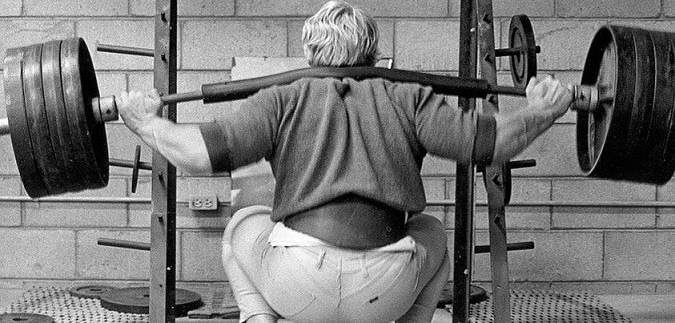It’s Time to Talk About Tension…
Often, we hear the phrase “time under tension” (or “TUT” for short) applied to exercise.
Spoken in the context of strength gains and muscle growth, it pervades fitness culture, and you’ll be hard-pressed to find an “evidence-based” trainer who doesn’t make sure to toss this phrase around from time to time. And why not? After all, popular personalities in the fitness world have established “mechanical tension” as part of the holy trinity of stimuli for muscle growth.
For now, I’ll spare the reader my personal thoughts on this assumption and its implications.
So what is it, exactly? Broadly speaking, trainers and exercise science nerds use “time under tension” to describe the amount of time that a muscle is working during a given rep, set, or entire workout. So the convention would be that, if you lifted a weight for a 10-rep set with each rep lasting 4 seconds, the time under tension (or “TUT”) for that set would be 40 seconds. If you did that for 6 sets, that’d be 240 seconds (or 4 minutes).
You can see how this might be a way of getting some reasonable idea of the cumulative stress you’ve put on a muscle. And stress, as we know, is needed to stimulate adaptation. So this is a good thing, right?
Not so fast.
While this method of calculating mechanical loads on the muscle is convenient and can give us some quick idea of what kinds of loads we might be putting on the muscle, it’s FAR from a complete picture. The first thing we need to realize is that comparisons of TUT do not necessarily account for the *amount* of force actually being generated (grossly by the entire limb, much less by an individual muscle). How much weight was being lifted? How much resistance were the muscles actually dealing with? I hope it makes sense, then, that two apparently similar “times under tension” could actually be quite different – even if the movements look the same.
Secondly, the entire concept of TUT is underpinned by the assumption that force output from a muscle (or group of muscles) is constant enough throughout the rep for the total time of that rep to have any meaning. This is NOT necessarily true. If you attempt to measure muscle activity via EMG, you’ll find that even movements that appear quite smooth from the outside can have widely varying muscle activation patterns. For example, spike So what’s this mean?
The usefulness of “Time Under Tension” as a measure depends on your ability to
control the actual loads on the muscle!
So to make an apples-to-apples comparison between sets, the tension generated between sets must be similar. And by similar, I mean the following:
- Same muscle(s) experiencing the load – if you’re trying to get one muscle to grow, you shoot yourself in the foot when you shift the stress onto other muscles.
- Same (or as close as possible) tension generated by the desired muscle(s) – If you’re pulling with 100 pounds of force during one rep and only 50 pounds during another, it stands to reason that those two reps might not “feel” the same to the metabolic machinery of the muscle.
- Same range of motion – Not only is the tension a muscle generates or experiences important – the length at which the muscle experiences said tension is a factor as well. The mechanics of muscle contraction will be affected by the length of the muscle (as this affects its ability to generate force and thus how hard that 10, 50, or 100 pounds might be for the muscle).
AND A BONUS!
- Same/similar cadence for the exercise – When you vary the speed of an exercise, it can often cause your brain to use a different strategy for accomplishing that movement. This could mean different patterns of muscle recruitment, wildly different forces experienced by the working tissues (muscles, joints, connective tissues, etc.), and likely differences in the ranges/lengths the muscle gets exposed to (which can in turn affect the stimulus on the muscle). So if you greatly vary the speed of the exercise, there’s a good chance that you’re affecting at least one of the first three points in this list.
So what does this ultimately mean? Is TUT useless? Should we stop trying to measure or account for it?
Not at all!
We just have to realize that there are some things we need to keep in mind if we want to try to track how much mechanical stress we’ve actually put on the muscle (and thus get some idea of how much of a stimulus for adaptation we might be giving it). And the best way to accomplish this is simply to keep your form as consistent as possible!
This should be a goal anyway, as exercising a high amount of control over your exercises is likely to minimize injury risk and also make it easier to control for the other factors that drive muscle adaptation (including metabolic stress and damage/trauma to the tissue). Those factors are subjects for another day, but rest assured that they play a role.
So if we want to talk about tension, we must develop a deep understanding of what it is and master its use. This takes time. It takes practice. It takes ongoing study and refinement of one’s thought process and technique.
Because there’s much more under the surface than we might first have realized.
